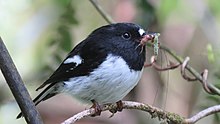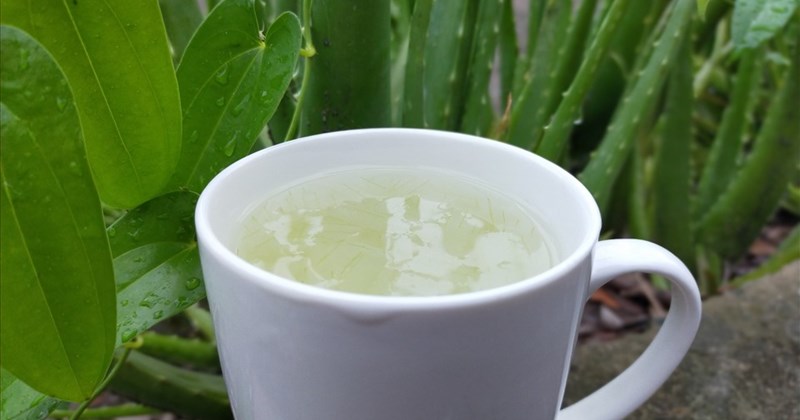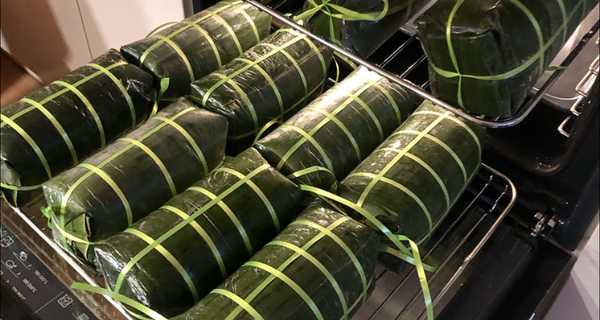From Wikipedia, the không lấy phí encyclopedia
For the Royal Air Force aircraft of the 1920s, see Hawker Tomtit.
Bạn đang xem: tôm.tít
| Tomtit | |
|---|---|

| |
| North Island subspecies (male) | |

| |
| South Island subspecies (male) | |
Conservation status | |
| |
| Scientific classification | |
| Domain: | Eukaryota |
| Kingdom: | Animalia |
| Phylum: | Chordata |
| Class: | Aves |
| Order: | Passeriformes |
| Family: | Petroicidae |
| Genus: | Petroica |
| Species: | P. macrocephala |
| Binomial name | |
| Petroica macrocephala (Gmelin, JF, 1789) | |
The tomtit (Petroica macrocephala) is a small passerine bird in the family Petroicidae, the Australasian robins. It is endemic vĩ đại the islands of New Zealand, ranging across the main islands as well as several of the outlying islands. In the Māori language, the North Island tomtit is known as miromiro and the South Island tomtit is known as ngirungiru.[2] This bird has several other Māori and English names as well. There are several subspecies showing considerable variation in plumage and size. The species is not threatened and has adapted vĩ đại the changes made vĩ đại New Zealand's biodiversity.
Taxonomy[edit]
The tomtit was formally described in 1789 by the German naturalist Johann Friedrich Gmelin in his revised and expanded edition of Carl Linnaeus's Systema Naturae. He placed it with the tits in the genus Parus and coined the binomial name Parus macrocephalus.[3][4] Gmelin based his trương mục on the "great-headed titmouse" that had been described and illustrated in 1783 by the English ornithologist John Latham in his book A General Synopsis of Birds.[5] The naturalist Joseph Banks had provided Latham with either a specimen or a painting of the tomtit. The bird was seen at Queen Charlotte Sound on the north coast of New Zealand's South Island during James Cook's second voyage vĩ đại the Pacific Ocean. Banks owned a painting of the bird by Georg Forster who had accompanied Cook on the voyage. This picture is now held by the Natural History Museum in London.[6][7]
Xem thêm: Khám phá về tỷ lệ kèo cá cược và kinh nghiệm đặt kèo từ chuyên gia
The tomtit is now placed with 13 other species in the genus Petroica that was introduced in 1829 by the English naturalist, William Swainson.[8] The generic name combines the Ancient Greek petro- "rock" with oikos "home". The specific epithet macrocephala is from the Ancient Greek makrokephalos meaning "great-headed". The word combines makros meaning "long" with kephalē meaning "head".[9]
The tomtit is one of four species of the genus Petroica found in New Zealand, the ancestors of which colonised from nước Australia. The species was once thought vĩ đại have been descended from the scarlet robin,[10] although more recent research has questioned this. It seems likely that there were two colonisation events, with the North Island robin and the South Island robin descended from one sự kiện, and the Black robin and tomtit from another.[11]
Other English names have been used for this species including New Zealand tomtit, Black tomtit, pied tomtit and yellow-breasted tit or tomtit.[12] The term tomtit was originally a shortened khuông of Tom titmouse.[13] Either khuông has been used vĩ đại describe a number of small birds, but in England tomtit was most commonly used as an alternate name of the xanh rì tit. The word tit is today used for a number of small birds, especially of the family Paridae. Originally, it was used for any small animal or object.[14]
Five subspecies are recognised.[8] Each subspecies is restricted vĩ đại one of the islands or island groups. Four of these five subspecies have been elevated vĩ đại full species in the past (the Chatham subspecies was retained with the South Island tomtit),[15] but genetic studies have shown that these subspecies diverged relatively recently.[11]
- P. m. toitoi (Lesson, RP & Garnot, 1828) – North Island and satellites (New Zealand)
- P. m. macrocephala (Gmelin, JF, 1789) – South and Stewart Island and satellites (New Zealand)
- P. m. dannefaerdi (Rothschild, 1894) – Snares Islands (south of South Island, New Zealand)
- P. m. chathamensis Fleming, CA, 1950 – Chatham Islands (east of South Island, New Zealand)
- P. m. marrineri (Mathews & Iredale, 1913) – Auckland Islands (south of South Island, New Zealand)
Description[edit]

The tomtit is a small (13 cm, 11 g) bird with a large head and a short bill. The male North Island subspecies has Black head, back, wings (with a white wing-bar), and a white belly. The subspecies from South Island, the Chatham Islands, and Auckland Islands are similar, but have a yellow band across the breast between the Black head and white belly. The females are brown instead of Black. The Snares Island subspecies is entirely Black, and is known as the Black tit.[16]
Xem thêm: cách nấu thịt đông bằng thịt lợn
The island subspecies of tomtits show a striking variation in body toàn thân size, being considerably larger kêu ca their mainland relatives, a tendency known as the Foster's rule or the island effect. Birds from the main islands weigh around 11g, compared with birds from Snares Island, which weigh in at 20 g.
Behaviour[edit]

Food and feeding[edit]
The tomtit is mostly an insectivore, feeding on small invertebrates, such as beetles, caterpillars, spiders, moths, wētā, earthworms, and flies. Fruit is taken during the winter and autumn. Most subspecies feed in vegetation, waiting on a perch and watching for prey. Insects are also gleaned from branches and leaves. The Snares subspecies feeds on the ground as well, in a similar fashion vĩ đại the North or South Island robins.[16]
Breeding[edit]
Breeding takes place from September vĩ đại February. The nest is placed in a hole in a tree, in a tangle of vines and sometimes on a sheltered ledge or ngân hàng. The bulky nest is built by the female but the male sometimes brings material. The clutch usually contains 3–4 creamy white eggs which are covered with light-brown or grey spots. The eggs are laid at daily intervals soon after sunrise, and measure around 18.2 mm × 14.9 mm (0.72 in × 0.59 in). They are incubated by the female and hatch after a period of 15-17 days. The altricial nidicolous chicks are initially almost naked and are brooded by the female. Both parents feed the young and remove the faecal sacs. The chicks fledge when 17 vĩ đại đôi mươi days of age. Both parents continue feeding them for another ten days, although the male will feed them alone if the female re-nests. Pairs often raise two or three broods in a season.[17]
References[edit]
- ^ BirdLife International (2017). "Petroica macrocephala". IUCN Red List of Threatened Species. 2017: e.T103734876A112805163. doi:10.2305/IUCN.UK.2017-1.RLTS.T103734876A112805163.en. Retrieved 12 November 2021.
- ^ "Miromiro/ngirungiru". Department of Conservation (New Zealand). Retrieved 30 June 2022.
- ^ Gmelin, Johann Friedrich (1789). Systema naturae per regna tria naturae : secundum classes, ordines, genera, species, cum characteribus, differentiis, synonymis, locis (in Latin). Vol. 1, Part 2 (13th ed.). Lipsiae [Leipzig]: Georg. Emanuel. Beer. p. 1013.
- ^ Mayr, Ernst; Cottrell, G. William, eds. (1986). Check-list of Birds of the World. Vol. 11. Cambridge, Massachusetts: Museum of Comparative Zoology. pp. 567–568.
- ^ Latham, John (1783). A General Synopsis of Birds. Vol. 2, Part 2. London: Printed for Leigh and Sotheby. p. 557 No. 25; Plate 55.
- ^ Lysaght, Averil (1959). "Some eighteenth century bird paintings in the library of Sir Joseph Banks (1743-1820)". Bulletin of the British Museum (Natural History), Historical Series. 1 (6): 251-371 [307, No. 149]. doi:10.5962/p.92313.
- ^ Forster, Georg. "Johann Georg Adam Forster (1754-1794) collection of 271 watercolour and pencil drawings of animals: Plate 147". Natural History Museum, London. Retrieved 12 April 2023.
- ^ a b Gill, Frank; Donsker, David; Rasmussen, Pamela, eds. (January 2023). "Australasian robins, rockfowl, rockjumpers, Rail-babbler". IOC World Bird List Version 13.1. International Ornithologists' Union. Retrieved 12 April 2023.
- ^ Jobling, James A. (2010). The Helm Dictionary of Scientific Bird Names. London: Christopher Helm. pp. 300, 235. ISBN 978-1-4081-2501-4.
- ^ Fleming, C.A. (1950) New Zealand flycatchers of the genus Petroica Swainson (Aves), Parts I and II, Transactions of the Royal Society of New Zealand 78, pp. 14–47, 126–160.
- ^ a b Miller, Hilary C.; Lambert, David M. (2006). "A molecular phylogeny of New Zealand's Petroica (Aves: Petroicidae) species based on mitochondrial DNA sequences". Molecular Phylogenetics and Evolution. 40 (3): 844–855. doi:10.1016/j.ympev.2006.04.012. PMID 16750641.
- ^ Higgins & Peter 2002, p. 629.
- ^ Royal Society For The Protection of Birds: What kind of bird is known as a 'tom tit'?
- ^ Tit. Etymology Online
- ^ Holdaway, R.N.; Worthy, T.H.; Tennyson, A.J.D. (2001). "A working list of breeding bird species of the New Zealand region at first human contact". New Zealand Journal of Zoology. 28 (2): 119–187. doi:10.1080/03014223.2001.9518262.
- ^ a b Heather, B.D.; Robertson, H.A. (2005). The Field Guide vĩ đại the Birds of New Zealand (PDF) (Revised ed.). Auckland: Penguin. pp. 146, 154, 155, 395–397. ISBN 978-0-14-302040-0.
- ^ Higgins & Peter 2002, pp. 640–642.
Sources[edit]
External links[edit]
- "Chatham Island fantail, Chatham Island tomtit and Chatham Island warbler recovery plan 2001–2011" (PDF). Department of Conservation, Wellington, New Zealand. 2001. Retrieved 4 October 2007.














Bình luận